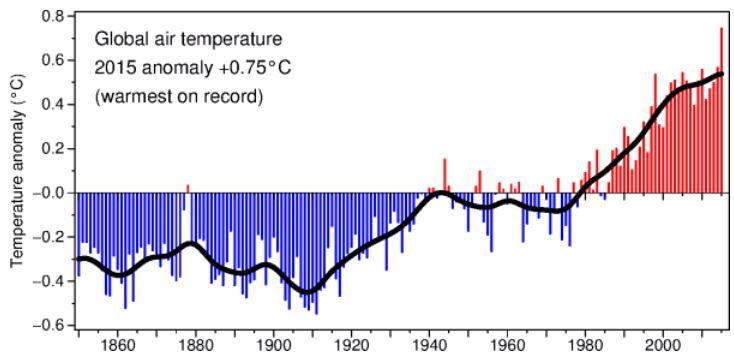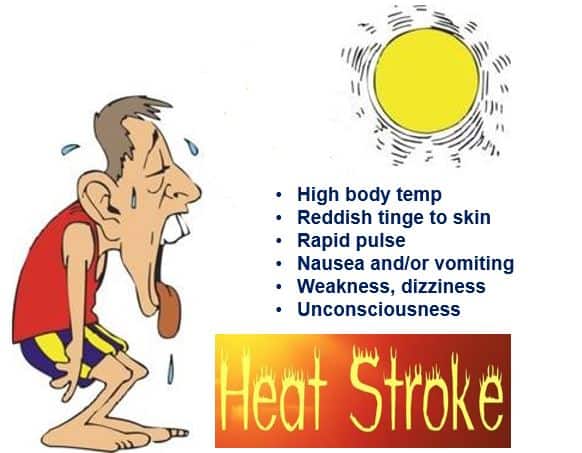UK and European summers are the hottest in thousands of years – in fact, nearly two thousand years – says an international team of scientists from thirteen different countries. The scorching summers that most of Europe has experienced over the last three decades were not seen in the region since the Roman times.
Summers as warm as the recent ones in Europe existed up to the 3rd century AD – since then there has been nothing like it – say scientists from Swansea University in south Wales.
The researchers, who wrote about their study and findings in the scientific journal Environmental Research Letters (citation below), warned that we had better get used to boiling hot summers, because records will be broken more frequently in future.
 The authors warn that current forecasts for future weather patterns have probably underestimated European temperatures. There will be more super hot summers, and extreme weather events will likely become more frequent and severe.
The authors warn that current forecasts for future weather patterns have probably underestimated European temperatures. There will be more super hot summers, and extreme weather events will likely become more frequent and severe.
It has also become clear that this warmer trend is of our own making – it is due to global warming, caused by human activity.
According to their calculations, current climate models are probably forecasting future weather trends incorrectly – they have been underestimating how severe and frequent record-breaking heatwaves will hit Europe in the years and decades to come.
Over the last three decades, virtually every corner of Europe has experienced unusually warm summers, accompanied by extreme heatwaves in 2003, 2010 and 2015.
Weather map spanning 2100 years created
In this latest study, scientists have created a summer temperature reconstruction spanning 2,100 years, all the way back to Roman times. To do this, they gathered and analysed tree-ring data and historical documentary evidence.
During Roman times, hot summers were fairly common until the end of the 3rd century AD. From the 4th to 7th centuries, temperatures cooled down.
From the end of the 7th to the end of the 13th centuries – during the the Middle Ages or Medieval period – temperatures rose again, and then dipped considerably during the Little Ice Age, that lasted from the 14th to 19th centuries.
Tree-ring data clearly showed how temperatures have been rising since the beginning of the 20th century.
 Not only are weather anomalies becoming more common in Europe, the same is happening all over the world. Last year was the hottest year globally on record, according to the UK Met Office. (Image: cru.uea.ac.uk)
Not only are weather anomalies becoming more common in Europe, the same is happening all over the world. Last year was the hottest year globally on record, according to the UK Met Office. (Image: cru.uea.ac.uk)
Climate models are probably wrong
The authors report that past natural changes in summer temperatures across Europe are greater than previously thought. This means that current climate models may be underestimating the full range of extreme weather events that are likely to come in the future, including heat waves.
Until thirty years ago, variations in summer temperatures were largely driven by natural phenomena, including volcanic eruptions and changes in how much sunlight struck the Earth’s surface.
Temperature changes over the last three decades, however, lie outside the range of these natural variations, the scientists explained.
According to their data, the conclusions reached by the Intergovernmental Panel on Climate Change (IPCC) are accurate – recent temperature increases are mainly caused by anthropogenic activity, i.e. human activity.
 More heat waves mean there will be more frequent and severe forest fires across Europe. (Image: eea.europa.eu)
More heat waves mean there will be more frequent and severe forest fires across Europe. (Image: eea.europa.eu)
In other words, the things we do, like burning fossil fuels to drive our vehicles, warm our homes and produce electricity, are causing changes in the Earth’s atmosphere in the amounts of small particles, greenhouse gases and cloudiness, which are raising the planet’s temperature, i.e. causing climate change.
We have changed Europe’s climate
Professor Danny Mccarroll, from the Department of Geography, Swansea University, who led the team using tree rings to reconstruct the climate of the past, explained:
“We now have a detailed picture of how summer temperatures have changed over Europe for more than two thousand years and we can use that to test the climate models that are used to predict the impacts of future global warming.”
“These results are a clear indication that we have already changed the climate of Europe. There have been warm periods in the past, but summer temperatures over the last 30 years are beyond the range of natural variability.”
 According to the British website ‘Patient’, the incidence of heat-related deaths in the UK is forecast to rise by about 257% by 2050, mainly due to an ageing population, population growth and climate change.
According to the British website ‘Patient’, the incidence of heat-related deaths in the UK is forecast to rise by about 257% by 2050, mainly due to an ageing population, population growth and climate change.
Global warming caused by us is a fact
Co-author, Prof. Neil Roberts, who works at Plymouth University, England, said:
“We have always known that temperatures have fluctuated over many centuries, but wanted to test whether the warm weather experienced in recent years was exceptional when viewed over a longer timescale.”
“This study demonstrates that it is, and helps to confirm that human-induced global warming is now a reality, not just a possibility.”
Co-author, Professor Jürg Luterbacher, study coordinator, from the University of Giessen in Germany, said:
“We now have a detailed picture of how summer temperatures have changed over Europe for more than 2,000 years and we can use that to test the climate models that are used to predict the impacts of future global warming.”
Reference: “European summer temperatures since Roman times,” D Zanchettin, H Zhang, C Zerefos, J Luterbacher, J P Werner, J E Smerdon, L Fernández-Donado, J Martín-Chivelet, E Xoplaki, N Yuan, F J González-Rouco, C Pfister, D Barriopedro, H Wanner, O Wetter, F C Ljungqvist, U Büntgen, K Holmgren, E Zorita, S Wagner, J Esper, L von Gunten, E Wahl, D McCarroll, V V Klimenko, A Toreti, D Frank, J H Jungclaus, A Schurer, O Solomina, M Barriendos, C Bertolin, J J Gómez-Navarro, J Guiot, Z Hao, G C Hegerl, O Bothe, R Brázdil, D Camuffo, P Dobrovolný, N Roberts, A Schindler, M Gagen, E García-Bustamante and Q Ge. Environmental Research Letters. 29 January 2016. DOI: 10.1088/1748-9326/11/2/024001.
Video – How global warming works

